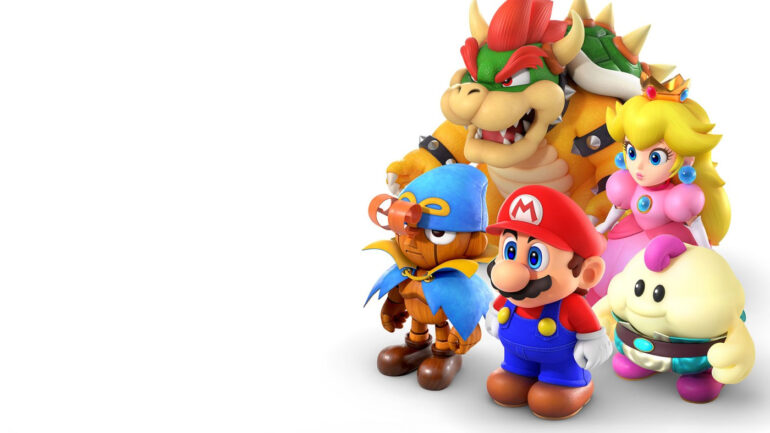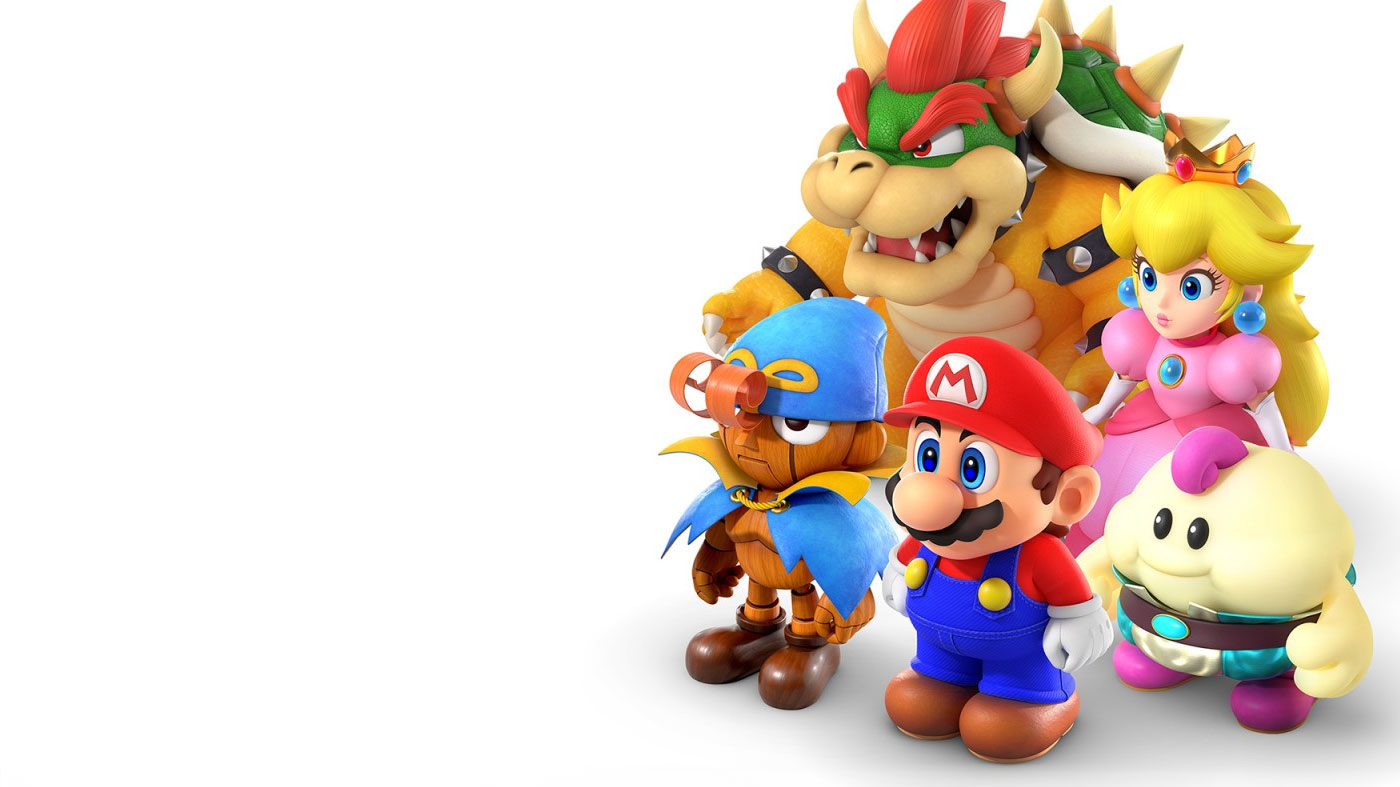Super Mario RPG was always a game that eluded me. I’d had many fond memories of playing the opening hours before quickly dropping it in favour of something else. I’ve got no nostalgia for it despite its reverence amongst Nintendo fans, but I’ve always appreciated its unique tone and sense of humor. While many concerns I had in my preview last month still ring true, it’s evident that Super Mario RPG on the Nintendo Switch is the definitive way to play one of the oddest games in Nintendo’s illustrious history.
Super Mario RPG follows Mario and his friends in a tale different from a typical Mario game. A giant sentient sword has plunged itself into Bowser’s castle, shattering the star road in the process and spreading pieces of it throughout the world. Shortly after, the Smithy Gang, a troupe of sentient weapons, invades and more or less challenges Mario to find the pieces. It’s a simplistic plot with minimal surprise, though it’s fun to see Bowser being forced to work with Mario to confront a bigger threat than them.
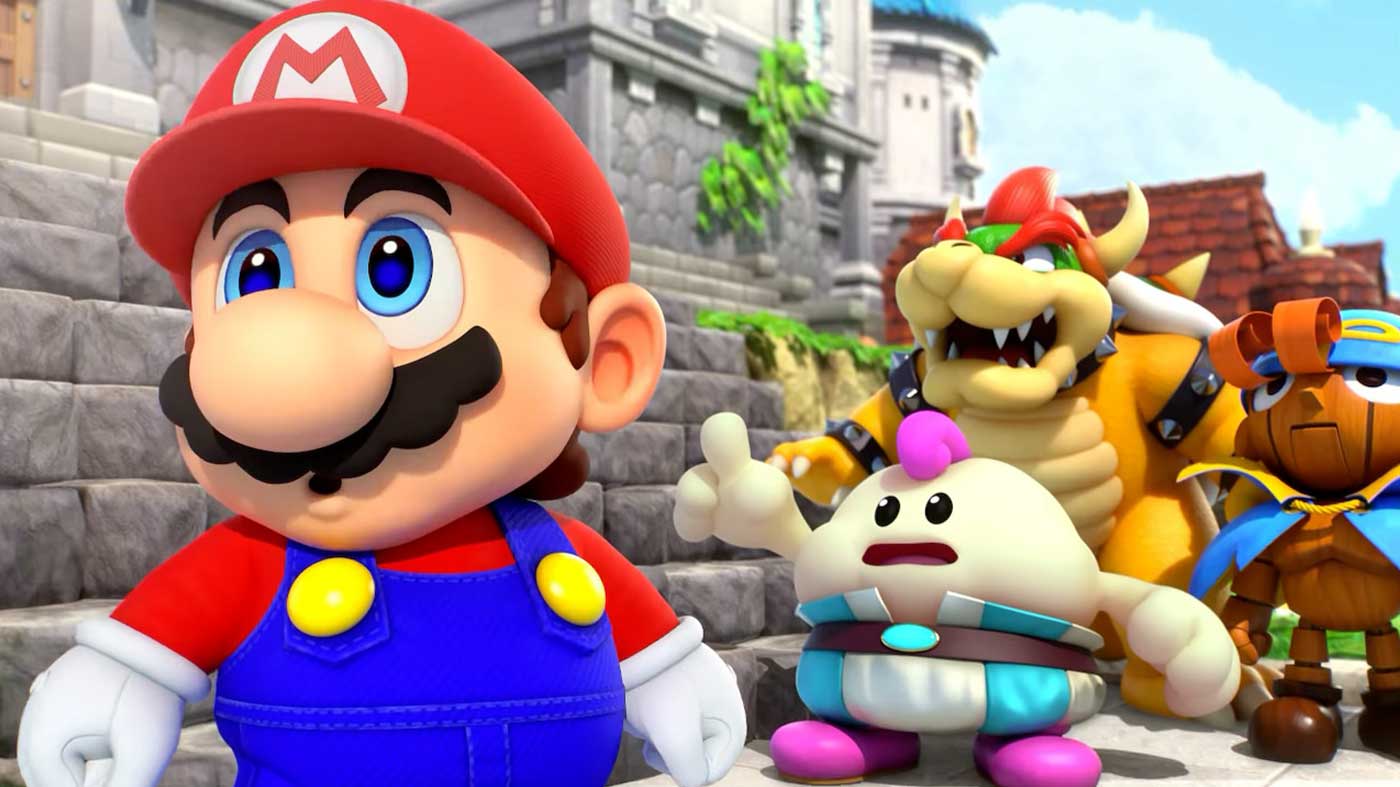
Super Mario RPG feels like a perfect time capsule of its era. It’s a microcosm of gameplay conventions that you’d expect from a typical RPG. The writing is quirky and witty, sharpened with an acerbic edge. The cadence of conversations between characters and the way jokes are built feel like classic Final Fantasy or even Earthbound at times. It’s a refreshing approach to storytelling within this world. It helps elevate the otherwise typical story you’d expect in a game like this.
[presto_player id=150280]
Feel more with PS5. Beyond the everyday. Beyond extraordinary. Even beyond imagination. Feel it now.
But that’s really where the similarities end. Super Mario RPG does its own thing. You won’t explore a wide-open world but instead, jump between levels on a world map similar to older Mario games. Each level combines isometric platforming identical to previous Mario games with turn-based battles similar to RPGs like Final Fantasy and Chrono Trigger. It’s a simple approach, but that’s almost certainly the point here – this is an RPG for newcomers to the genre.
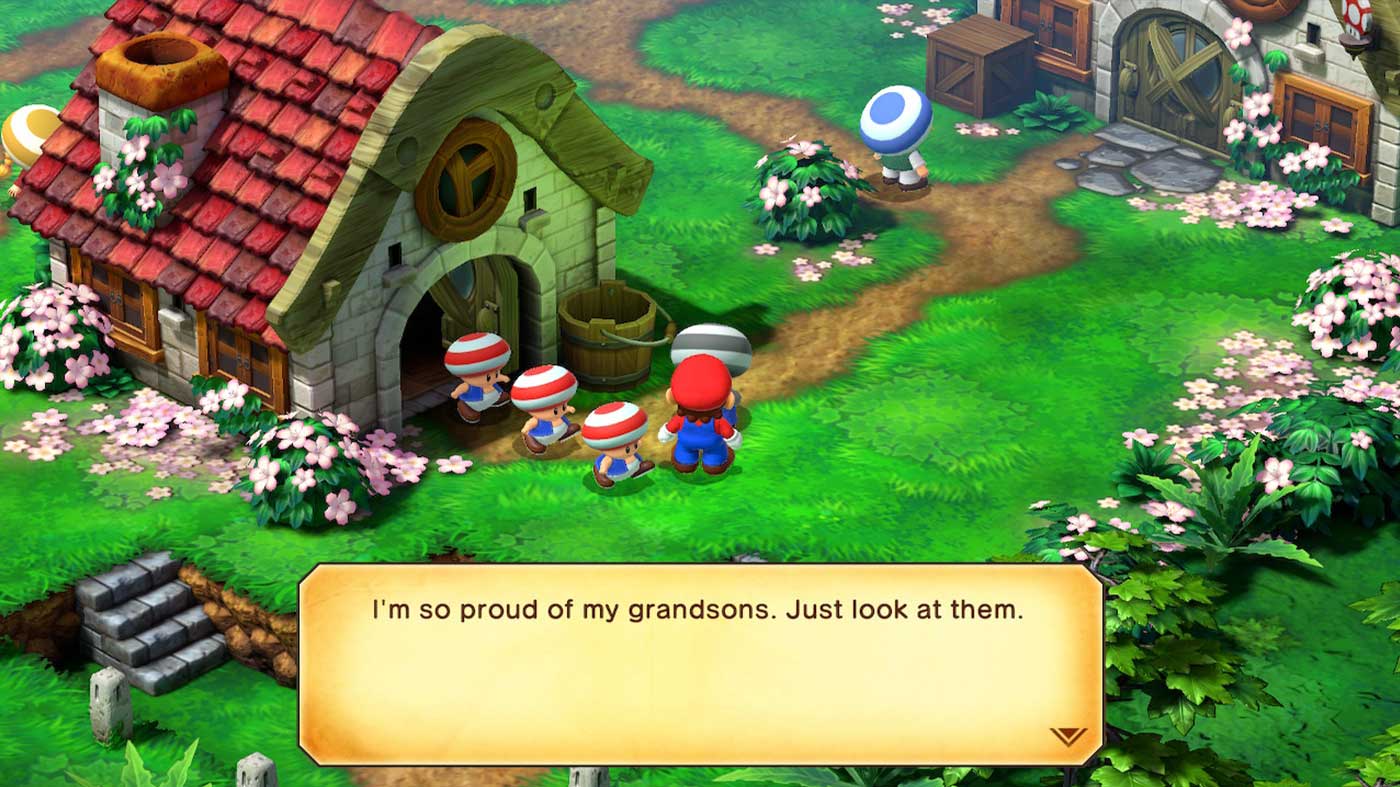
Being a bit more linear than a typical RPG, there’s no massive emphasis on exploration in Super Mario RPG. There’s rarely a moment where you’ll have to go off the main path, and, if you do, you’re often rewarded with a power-up and rarely anything major. It’s an approach bound to be divisive, but the simplicity of the experience is refreshing and bound to appeal to audiences that would otherwise find these bigger open worlds of other RPGS overwhelming.
The turn-based system follows the same mantra – that simple is best – but is the best execution in the game. Serving as an obvious predecessor to Paper Mario and Mario & Luigi, the menu-based battle system is so simple that it rarely feels like move selections slow the flow of battle. On top of that, everything moves at a snappy pace, too, much faster than any of the turn-based games from that era.
But simple additions to this battle help the otherwise simplistic system stay engaging for the game’s runtime. Each ability used by your party members can be powered up with an additional action – be it a button tap or a joystick spinning – that might do more damage or impart other effects. They’re simple inputs that do great work ensuring the battles stay engaging without disrupting the flow of battles.
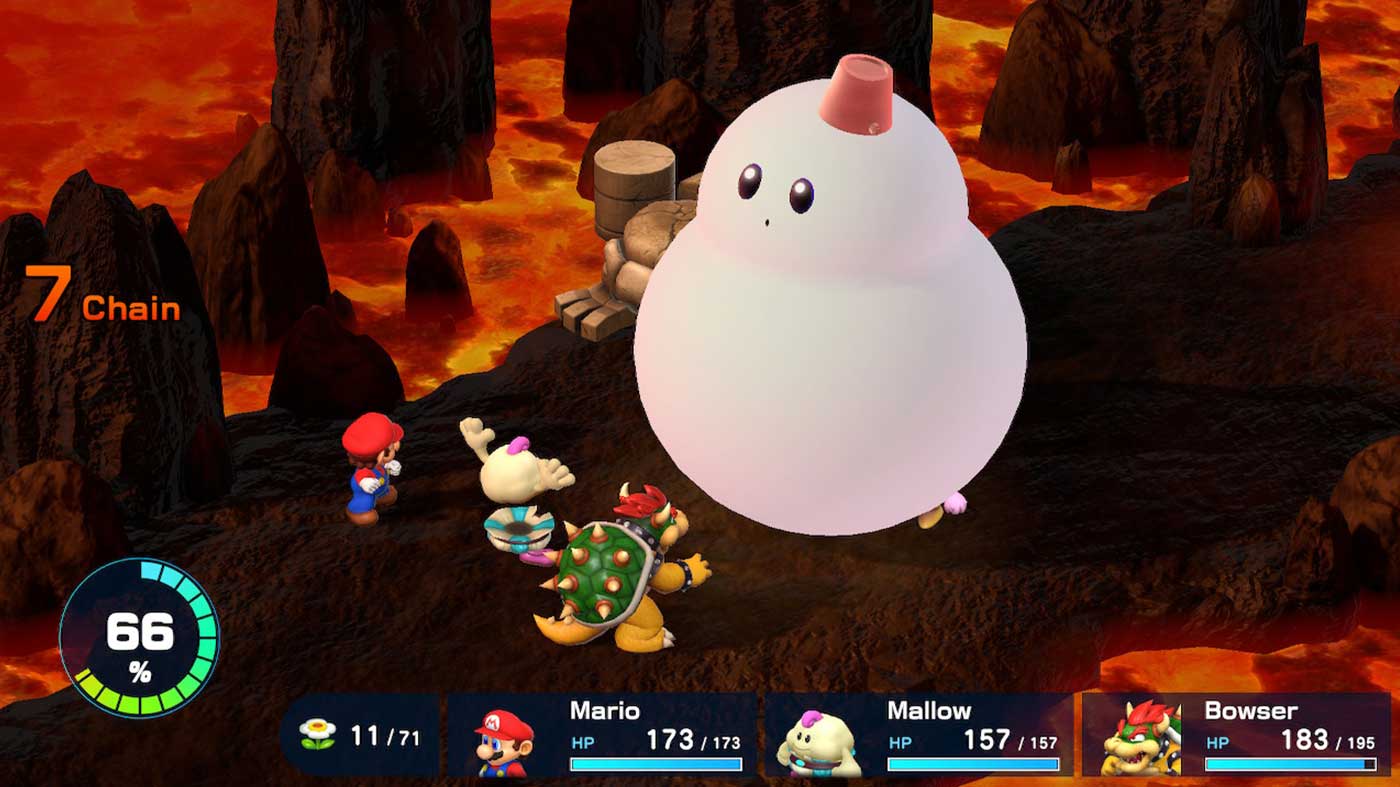
There’s a nice mix of abilities available, too, with many being borrowed from the typical RPG archetypes you’re used to seeing. Mario is an all-rounder. Mallow is an offensive mage. Bowser is a tank-like heavy hitter. Peach is a white mage. Geno is a powerful wildcard. The five potential party members are all simple enough that you can get away with playing with any combination you prefer, and the lenient difficulty means that any pitfalls in your party lineup won’t be a make-or-break situation. Even better, the remake allows you to switch members mid-battle, so nobody is ever left on the bench.
GET IT FROM AMAZON FOR $69 WITH FREE SHIPPING
The big new addition with the remake is the Triple Move system. As you successfully perform actions in battle, a meter will fill and give the party access to a Triple Move. Much like a Limit Break or Triple Tech in other RPGs, they’re big and bombastic moves that deal massive damage or impart huge buffs. Your Triple Move varies depending on who’s in your party. Having Mario, Mallow and Bowser in your party will perform an aerial assault from Bowser’s clown car using Mario’s Fire Flower and Mallow’s magic. Others might see Peach using her parasol on the party to protect them from attacks. They’re immaculately presented and an excellent standout from the remake treatment.
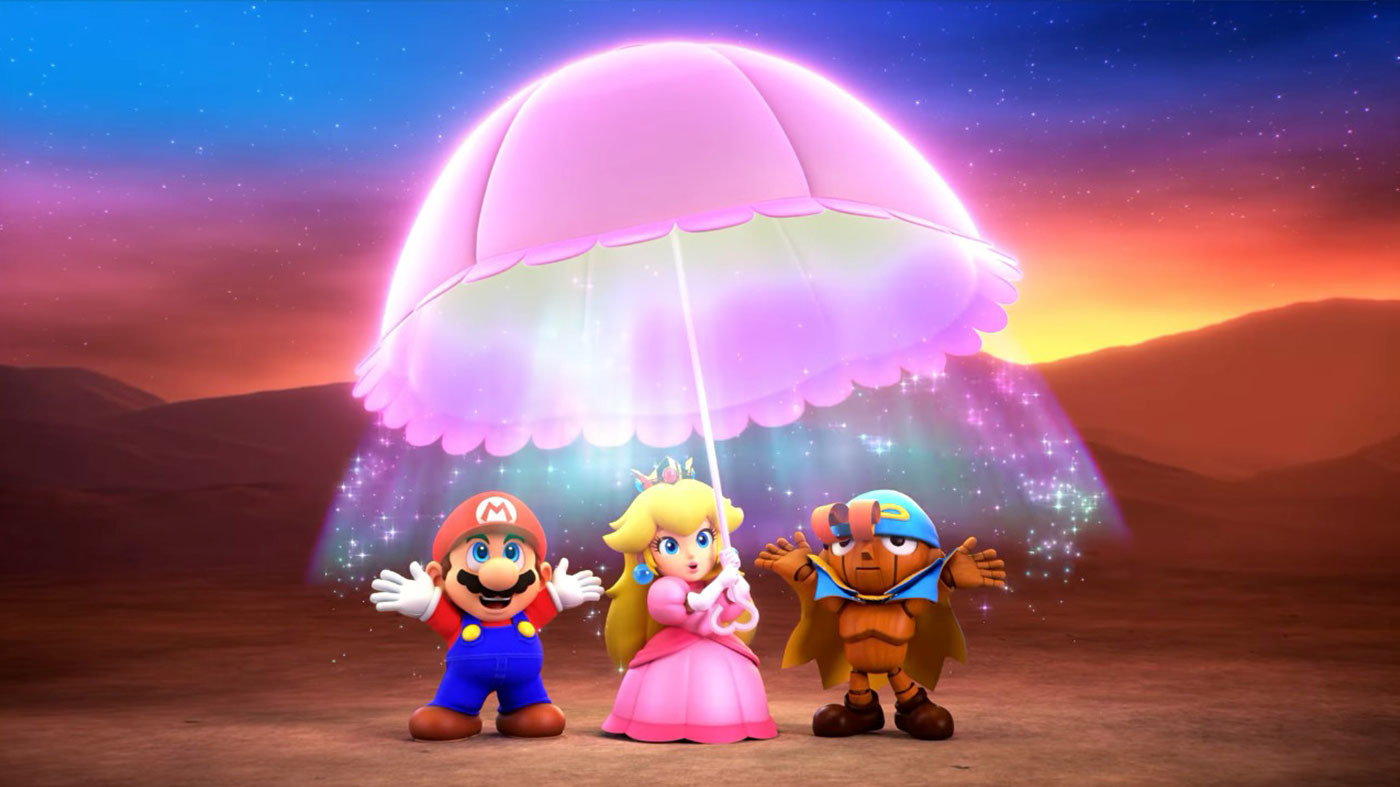
Other aspects of the game have also been tweaked in favour of the player experience. Items are automatically picked up when out in the field, autosaves prevent you from losing hours of progress, and visual indicators appear during battle to help land critical hits. They’re minor changes that aid the flow of the game in a big way, remedying many of the complaints about ‘slower’ gameplay that many games of this era commonly face.
Much of the new content in the remake rears its head in the post-game. There’s still some optional content in the original game, too. However, the remake introduces the opportunity to again battle some bosses in the game. Each of these rematches offers a higher sense of difficulty and even features new abilities. They’re a fun distraction that leads to something even more remarkable that I’d not even expected and would, quite frankly, be rude to spoil. But these post-game challenges are a lot more complex than what was in the original game and its main storyline.
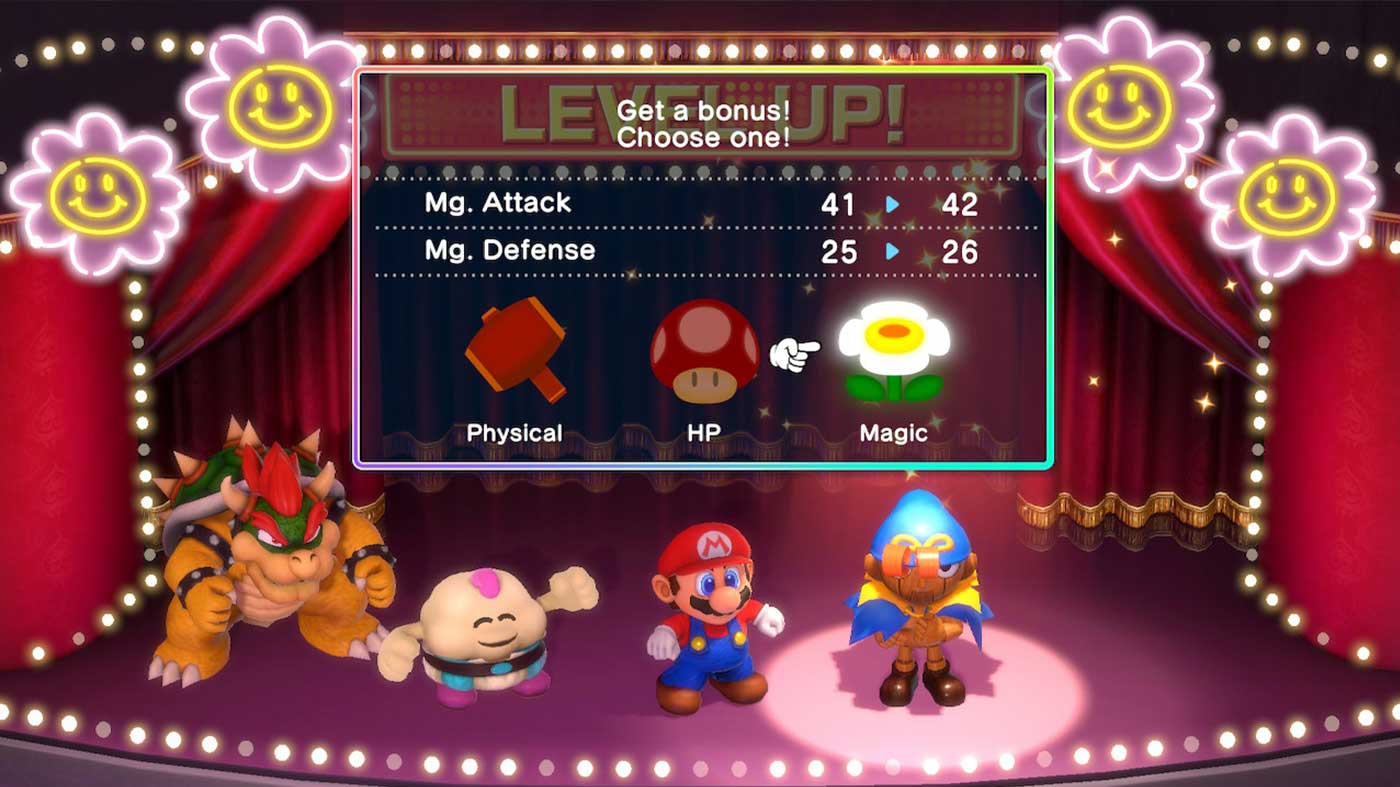
From a visual standpoint, the jump from 2D sprites to 3D models will always be controversial, but Super Mario RPG does a pretty earnest job of maintaining the spirit of the original. The new cinematics that introduce each character and boss are super slick and do a great job of bringing certain scenes that were previously just text boxes to life. The game looks amazingly bright, vibrant and crisp with the new change in art direction. Even more encouragingly, everything runs at an excellent framerate, too.
Similar care has been paid to bringing the game’s already strong soundtrack up to scratch with modern expectations. Yoko Shimomura, who composed music for the original game, Kingdom Hearts and Xenoblade Chronicles, has returned to remaster these tracks. Each of the new compositions adds a lot more depth and, dare I say it, soul to the tracks and easily eclipses the original. If you prefer the originals, you can switch to them at any point. There is no voice work, unfortunately, which feels a bit strange, especially in the context of the new cinematics, but otherwise, this is as entirely text-based as it was all those years ago.
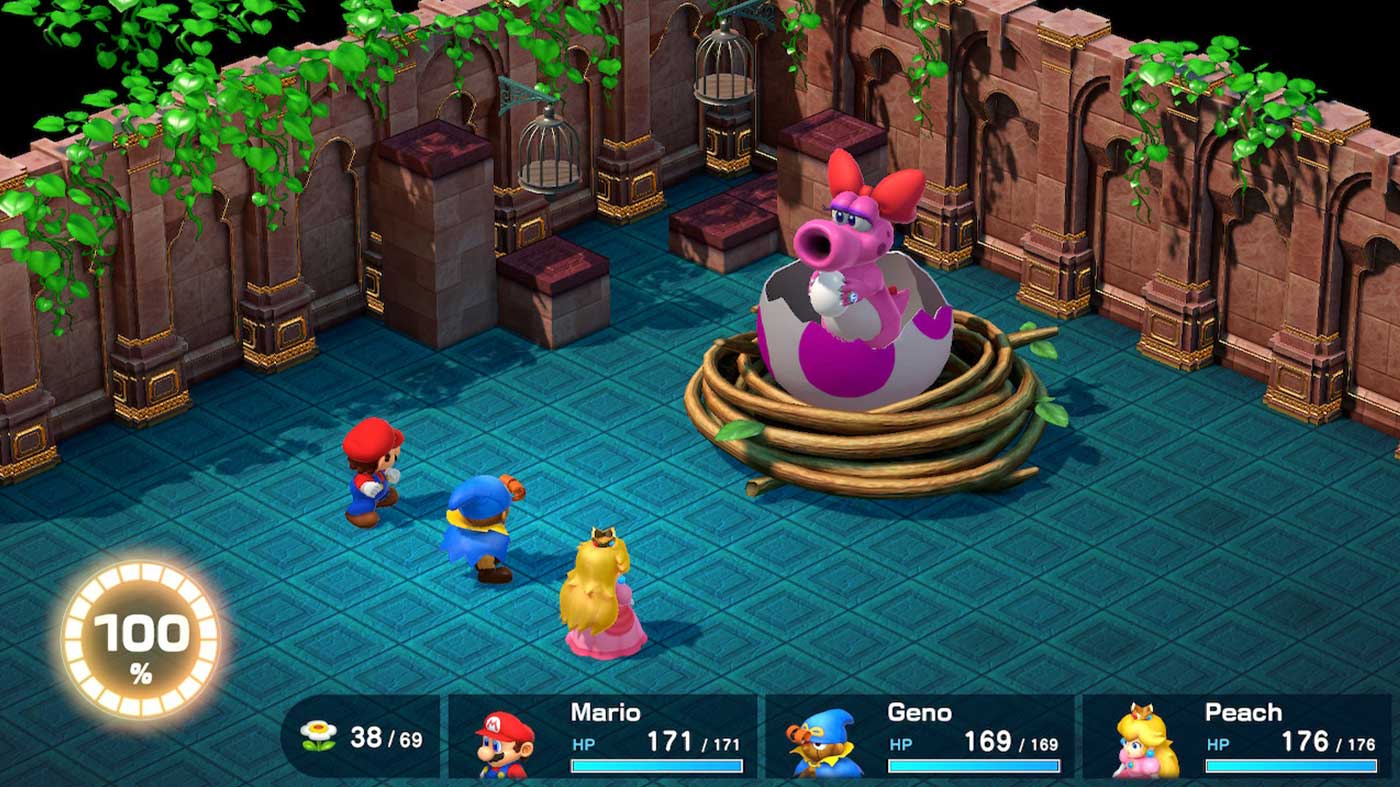
At the end of the day, Super Mario RPG represents a unique point in Nintendo’s history that will never happen again. Its quirky and oddball sense of humour and charm easily sets it apart from the rest, and even if it is a simple affair at the end of the day, it’s still endlessly endearing.


